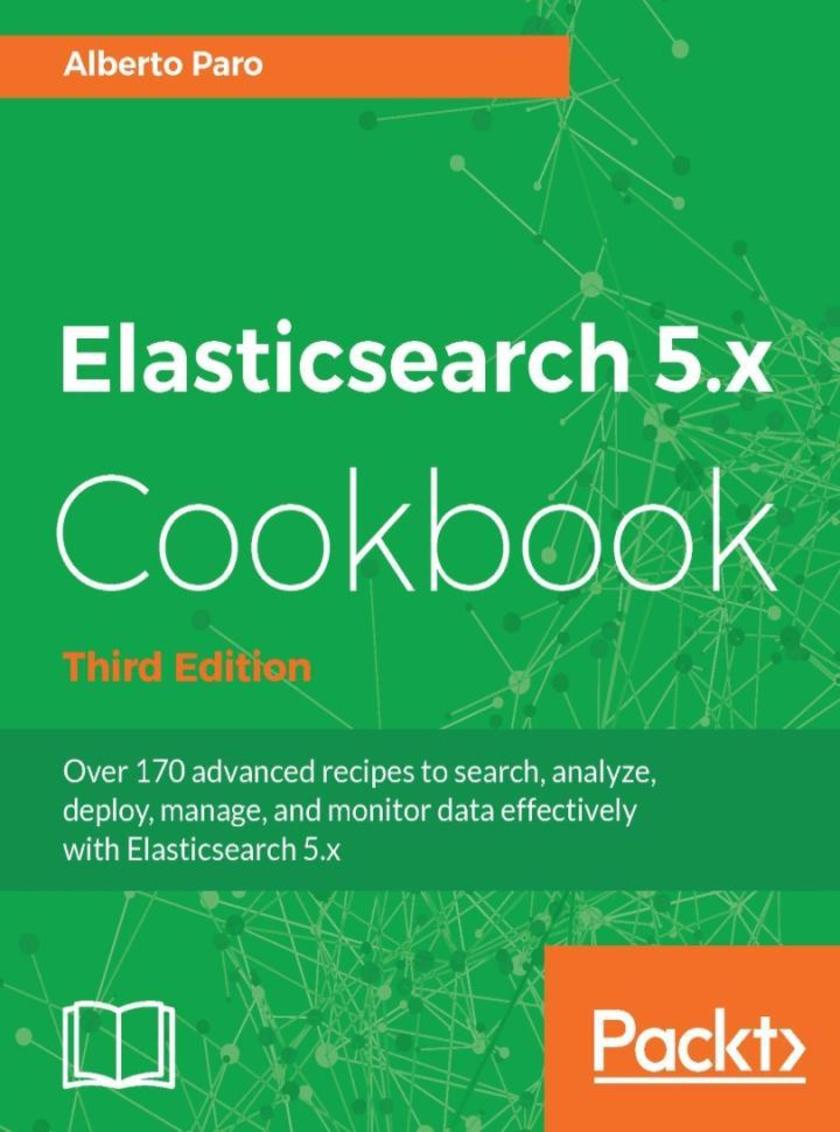
Elasticsearch 5.x Cookbook - Third Edition
¥99.18
Over 170 advanced recipes to search, analyze, deploy, manage, and monitor data effectively with Elasticsearch 5.x About This Book Deploy and manage simple Elasticsearch nodes as well as complex cluster topologies Write native plugins to extend the functionalities of Elasticsearch 5.x to boost your business Packed with clear, step-by-step recipes to walk you through the capabilities of Elasticsearch 5.x Who This Book Is For If you are a developer who wants to get the most out of Elasticsearch for advanced search and analytics, this is the book for you. Some understanding of JSON is expected. If you want to extend Elasticsearch, understanding of Java and related technologies is also required. What You Will Learn Choose the best Elasticsearch cloud topology to deploy and power it up with external plugins Develop tailored mapping to take full control of index steps Build complex queries through managing indices and documents Optimize search results through executing analytics aggregations Monitor the performance of the cluster and nodes Install Kibana to monitor cluster and extend Kibana for plugins Integrate Elasticsearch in Java, Scala, Python and Big Data applications In Detail Elasticsearch is a Lucene-based distributed search server that allows users to index and search unstructured content with petabytes of data. This book is your one-stop guide to master the complete Elasticsearch ecosystem. We’ll guide you through comprehensive recipes on what’s new in Elasticsearch 5.x, showing you how to create complex queries and analytics, and perform index mapping, aggregation, and *ing. Further on, you will explore the modules of Cluster and Node monitoring and see ways to back up and restore a snapshot of an index. You will understand how to install Kibana to monitor a cluster and also to extend Kibana for plugins. Finally, you will also see how you can integrate your Java, Scala, Python, and Big Data applications such as Apache Spark and Pig with Elasticsearch, and add enhanced functionalities with custom plugins. By the end of this book, you will have an in-depth knowledge of the implementation of the Elasticsearch architecture and will be able to manage data efficiently and effectively with Elasticsearch. Style and approach This book follows a problem-solution approach to effectively use and manage Elasticsearch. Each recipe focuses on a particular task at hand, and is explained in a very simple, easy to understand manner.
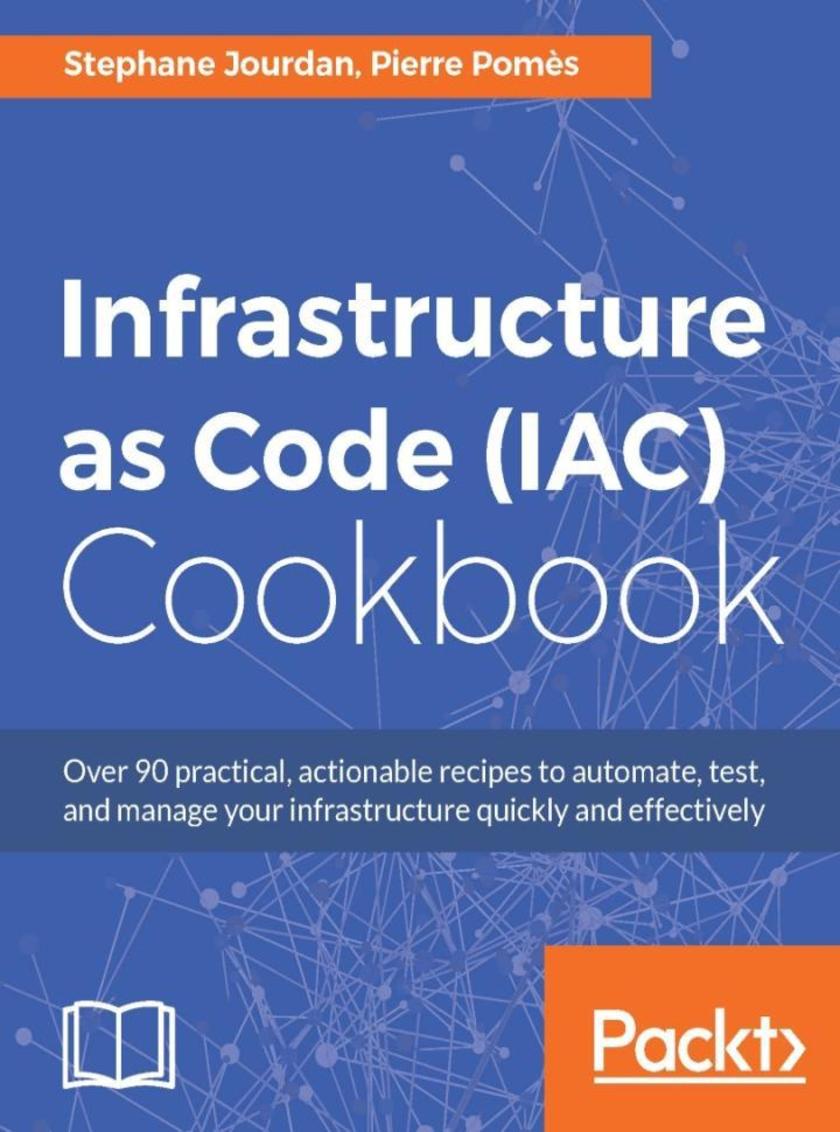
Infrastructure as Code (IAC) Cookbook
¥90.46
Over 90 practical, actionable recipes to automate, test, and manage your infrastructure quickly and effectively About This Book Bring down your delivery timeline from days to hours by treating your server configurations and VMs as code, just like you would with software code. Take your existing knowledge and skill set with your existing tools (Puppet, Chef, or Docker) to the next level and solve IT infrastructure challenges. Use practical recipes to use code to provision and deploy servers and applications and have greater control of your infrastructure. Who This Book Is For This book is for DevOps engineers and developers working in cross-functional teams or operations and would now switch to IAC to manage complex infrastructures. What You Will Learn Provision local and remote development environments with Vagrant Automate production infrastructures with Terraform, Ansible and Cloud-init on AWS, OpenStack, Google Cloud, Digital Ocean, and more Manage and test automated systems using Chef and Puppet Build, ship, and debug optimized Docker containers Explore the best practices to automate and test everything from cloud infrastructures to operating system configuration In Detail Infrastructure as Code (IAC) is a key aspect of the DevOps movement, and this book will show you how to transform the way you work with your infrastructure—by treating it as software. This book is dedicated to helping you discover the essentials of infrastructure automation and its related practices; the over 90 organized practical solutions will demonstrate how to work with some of the very best tools and cloud solutions. You will learn how to deploy repeatable infrastructures and services on AWS, OpenStack, Google Cloud, and Digital Ocean. You will see both Ansible and Terraform in action, manipulate the best bits from cloud-init to easily bootstrap instances, and simulate consistent environments locally or remotely using Vagrant. You will discover how to automate and test a range of system tasks using Chef or Puppet. You will also build, test, and debug various Docker containers having developers’ interests in mind. This book will help you to use the right tools, techniques, and approaches to deliver working solutions for today’s modern infrastructure challenges. Style and approach This is a recipe-based book that allows you to venture into some of the most cutting-edge practices and techniques about IAC and solve immediate problems when trying to implement them.
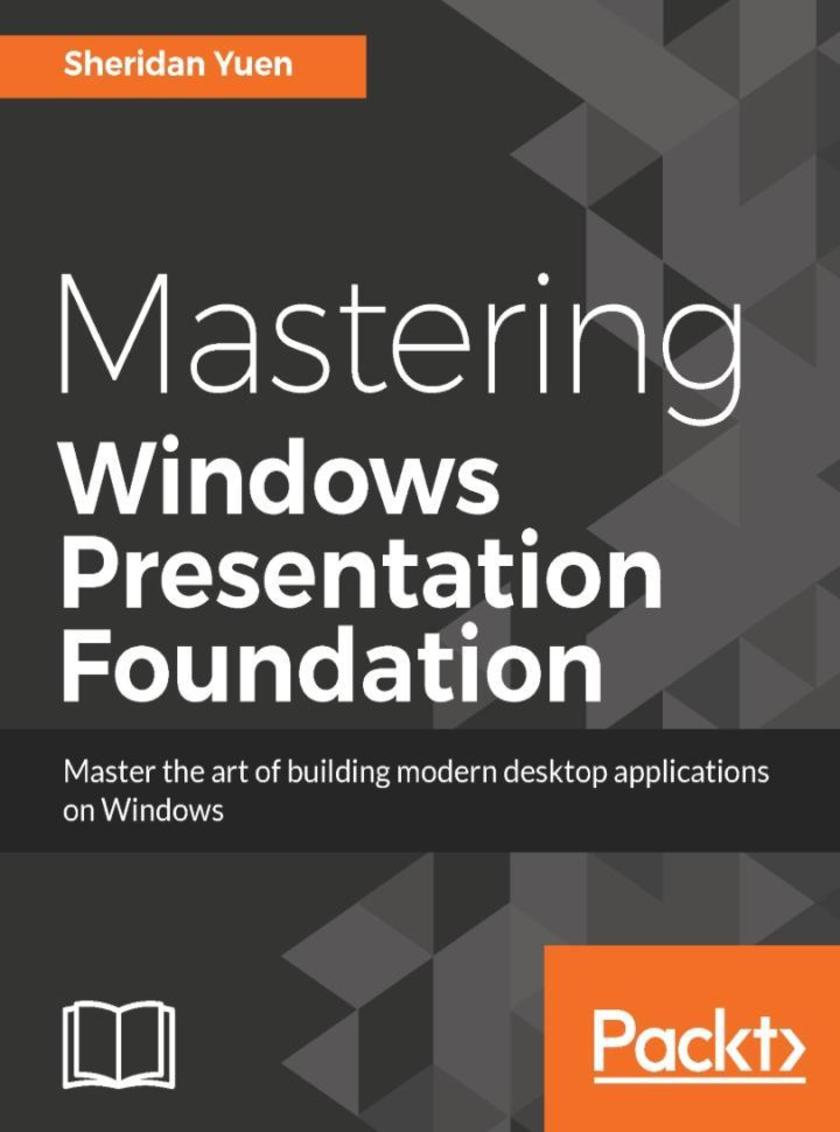
Mastering Windows Presentation Foundation
¥99.18
Master the art of building modern desktop applications on Windows About This Book Learn how to use the MVVM software architectural pattern and see the benefits of using it with Windows Presentation Fountain (WPF) Explore various ways to enhance efficiency through performance tuning and UI automation Obtain a deep understanding of data validation and understand various methods that suit different situations Who This Book Is For This book is for working developers with a moderate level of knowledge about Windows Presentation Foundation. It will also be of special interest to ambitious individuals who want to know more about application architecture. It is also suitable for those who just want to learn how to build visually stunning user interfaces. What You Will Learn Use MVVM to improve workflow Create visually stunning user interfaces Perform data binds proficiently Implement advanced data validation Locate and resolve errors quickly Master practical animations Improve your applications’ performance In Detail Windows Presentation Foundation is rich in possibilities when it comes to delivering an excellent user experience. This book will show you how to build professional-grade applications that look great and work smoothly. We start by providing you with a foundation of knowledge to improve your workflow – this includes teaching you how to build the base layer of the application, which will support all that comes after it. We’ll also cover the useful details of data binding. Next, we cover the user interface and show you how to get the most out of the built-in and custom WPF controls. The final section of the book demonstrates ways to polish your applications, from adding practical animations and data validation to improving application performance. The book ends with a tutorial on how to deploy your applications and outlines potential ways to apply your new-found knowledge so you can put it to use right away. The book also covers 2D and 3D graphics, UI automation, and performance tuning. Style and approach Filled with intriguing and practical examples, this book delineates concepts that will help you take your WPF skills to the next level.
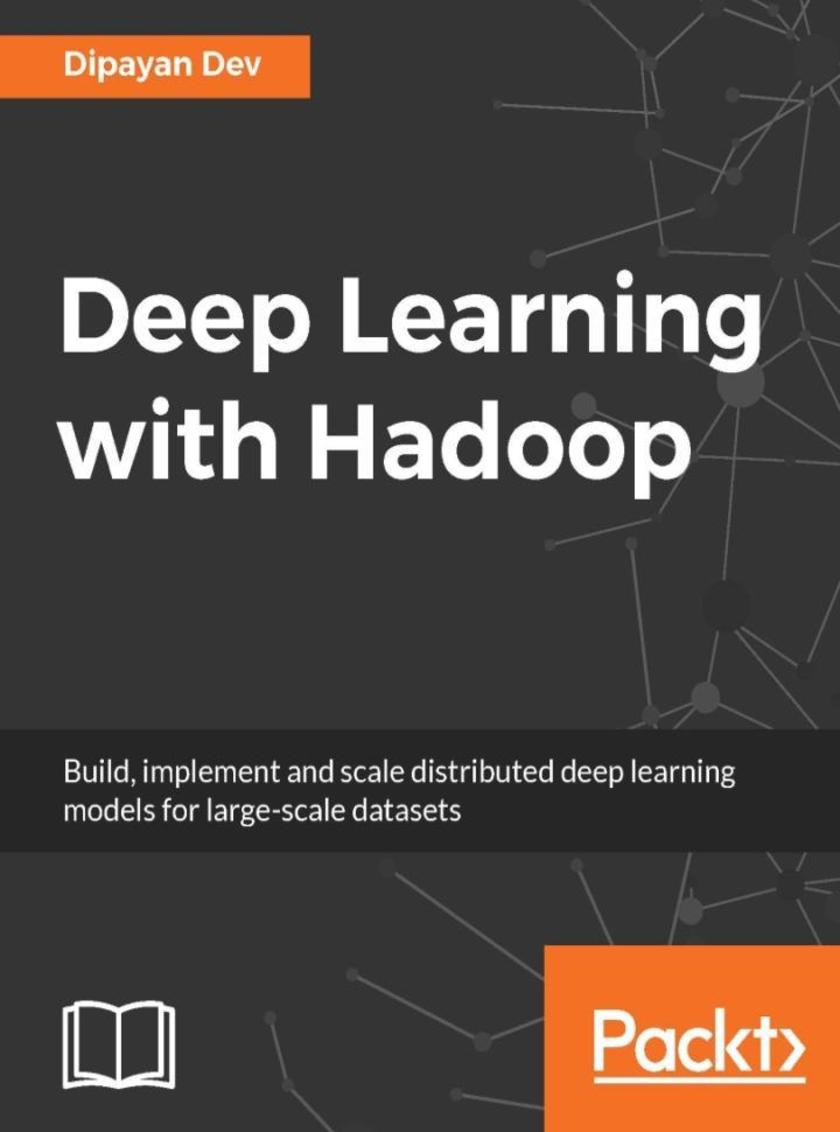
Deep Learning with Hadoop
¥71.93
Build, implement and scale distributed deep learning models for large-scale datasets About This Book Get to grips with the deep learning concepts and set up Hadoop to put them to use Implement and parallelize deep learning models on Hadoop’s YARN framework A comprehensive tutorial to distributed deep learning with Hadoop Who This Book Is For If you are a data scientist who wants to learn how to perform deep learning on Hadoop, this is the book for you. Knowledge of the basic machine learning concepts and some understanding of Hadoop is required to make the best use of this book. What You Will Learn Explore Deep Learning and various models associated with it Understand the challenges of implementing distributed deep learning with Hadoop and how to overcome it Implement Convolutional Neural Network (CNN) with deeplearning4j Delve into the implementation of Restricted Boltzmann Machines (RBM) Understand the mathematical explanation for implementing Recurrent Neural Networks (RNN) Get hands on practice of deep learning and their implementation with Hadoop. In Detail This book will teach you how to deploy large-scale dataset in deep neural networks with Hadoop for optimal performance. Starting with understanding what deep learning is, and what the various models associated with deep neural networks are, this book will then show you how to set up the Hadoop environment for deep learning. In this book, you will also learn how to overcome the challenges that you face while implementing distributed deep learning with large-scale unstructured datasets. The book will also show you how you can implement and parallelize the widely used deep learning models such as Deep Belief Networks, Convolutional Neural Networks, Recurrent Neural Networks, Restricted Boltzmann Machines and autoencoder using the popular deep learning library deeplearning4j. Get in-depth mathematical explanations and visual representations to help you understand the design and implementations of Recurrent Neural network and Denoising AutoEncoders with deeplearning4j. To give you a more practical perspective, the book will also teach you the implementation of large-scale video processing, image processing and natural language processing on Hadoop. By the end of this book, you will know how to deploy various deep neural networks in distributed systems using Hadoop. Style and approach This book takes a comprehensive, step-by-step approach to implement efficient deep learning models on Hadoop. It starts from the basics and builds the readers’ knowledge as they strengthen their understanding of the concepts. Practical examples are included in every step of the way to supplement the theory.
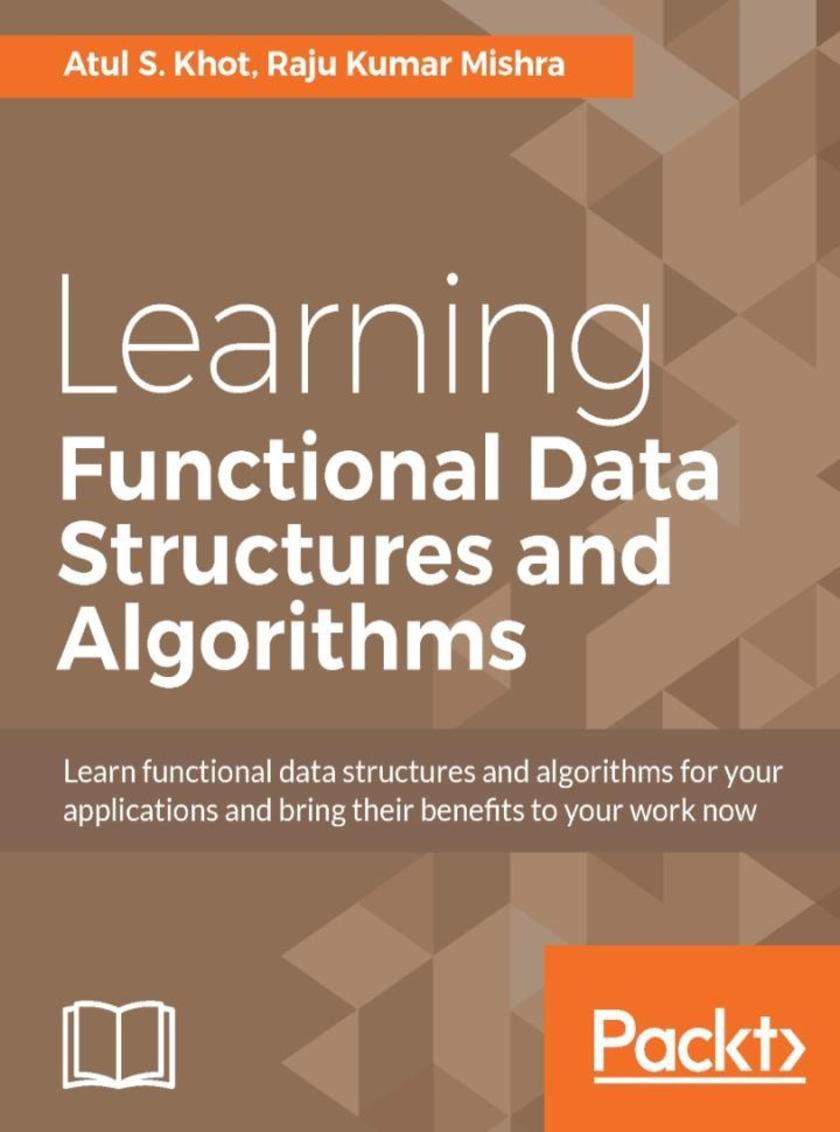
Learning Functional Data Structures and Algorithms
¥80.65
Learn functional data structures and algorithms for your applications and bring their benefits to your work now About This Book Moving from object-oriented programming to functional programmingThis book will help you get started with functional programming. Easy-to-understand explanations of practical topics will help you get started with functional data structures. Illustrative diagrams to explain the algorithms in detail. Get hands-on practice of Scala to get the most out of functional programming. Who This Book Is For This book is for those who have some experience in functional programming languages. The data structures in this book are primarily written in Scala, however implementing the algorithms in other functional languages should be straight forward. What You Will Learn Learn to think in the functional paradigm Understand common data structures and the associated algorithms, as well as the context in which they are commonly used Take a look at the runtime and space complexities with the O notation See how ADTs are implemented in a functional setting Explore the basic theme of immutability and persistent data structures Find out how the internal algorithms are redesigned to exploit structural sharing, so that the persistent data structures perform well, avoiding needless copying. Get to know functional features like lazy evaluation and recursion used to implement efficient algorithms Gain Scala best practices and idioms In Detail Functional data structures have the power to improve the codebase of an application and improve efficiency. With the advent of functional programming and with powerful functional languages such as Scala, Clojure and Elixir becoming part of important enterprise applications, functional data structures have gained an important place in the developer toolkit. Immutability is a cornerstone of functional programming. Immutable and persistent data structures are thread safe by definition and hence very appealing for writing robust concurrent programs. How do we express traditional algorithms in functional settingWon’t we end up copying too muchDo we trade performance for versioned data structuresThis book attempts to answer these questions by looking at functional implementations of traditional algorithms. It begins with a refresher and consolidation of what functional programming is all about. Next, you’ll get to know about Lists, the work horse data type for most functional languages. We show what structural sharing means and how it helps to make immutable data structures efficient and practical. Scala is the primary implementation languages for most of the examples. At times, we also present Clojure snippets to illustrate the underlying fundamental theme. While writing code, we use ADTs (abstract data types). Stacks, Queues, Trees and Graphs are all familiar ADTs. You will see how these ADTs are implemented in a functional setting. We look at implementation techniques like amortization and lazy evaluation to ensure efficiency. By the end of the book, you will be able to write efficient functional data structures and algorithms for your applications. Style and approach Step-by-step topics will help you get started with functional programming. Learn by doing with hands-on code snippets that give you practical experience of the subject.
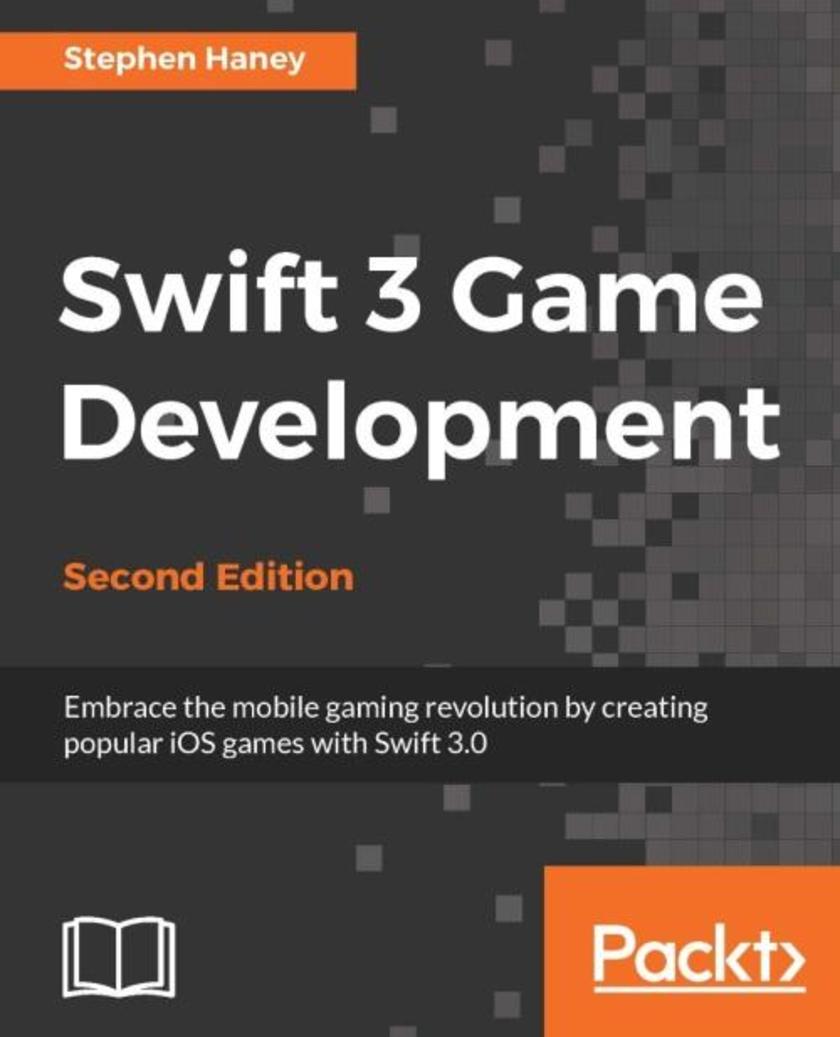
Swift 3 Game Development - Second Edition
¥71.93
Embrace the mobile gaming revolution by creating popular iOS games with Swift 3.0 About This Book Create and design games for iPhone and iPad using SpriteKit and Swift 3.0 Learn the core fundamentals of SpriteKit game development and mix and match techniques to customize your game This step-by-step practical guide will teach you to build games from scratch using little-known tips and strategies for maximum fun Who This Book Is For If you wish to create and publish fun iOS games using Swift, then this book is for you. You should be familiar with basic programming concepts. However, no prior game development or Apple ecosystem experience is required. What You Will Learn Deliver powerful graphics, physics, and sound in your game by using SpriteKit Set up the scene using the new capabilities of the scene editor and custom classes Maximize gameplay with little-known tips and strategies for fun and repeatable action Make use of animations, graphics, and particles to polish your game Understand the current mobile monetization landscape to choose the best option for your own situation Integrate your game with Game Center so that your players can share their high scores and achievements Publish your game to the App Store and enjoy people playing your games In Detail Swift is the perfect choice for game development. Developers are intrigued by Swift 3.0 and want to make use of new features to develop their best games yet. Packed with best practices and easy-to-use examples, this book leads you step by step through the development of your first Swift game. This book starts by introducing SpriteKit and Swift's new features that can be used for game development. After setting up your first Swift project, you will build your first custom class, learn how to draw and animate your game, and add physics simulations. Then, you will add the player character, NPCs, and powerups. To make your game more fun and engaging, you will learn how to set up scenes and backgrounds, build fun menus, and integrate with Apple Game Center to add leaderboards and achievements. You will then make your game stand out by adding animations when game objects collide, and incorporate proven techniques such as the advanced particle system and graphics. Finally, you will explore the various options available to start down the path towards monetization and publish your finished games to the App Store. By the end of this book, you will be able to create your own iOS games using Swift and SpriteKit. Style and approach This project-based guide is engaging with a visually-rich approach rather than a text-heavy approach. With every chapter containing practical examples, you will understand how Swift programming works and make the most of the new features in version 3.0.
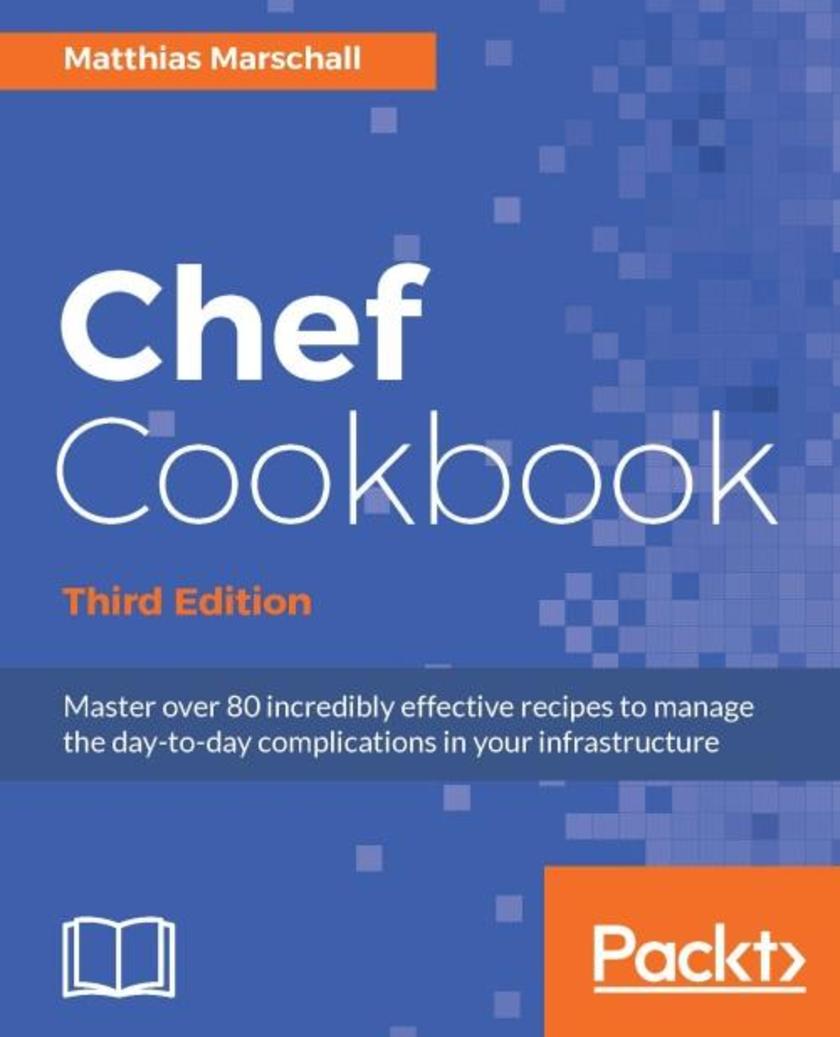
Chef Cookbook - Third Edition
¥80.65
Master over 80 incredibly effective recipes to manage the day-to-day complications in your infrastructure About This Book Immediately apply Devops techniques and methods, then combine them with powerful Chef tools to manage and automate your infrastructure Address the growing challenges of code management, cloud, and virtualization with Chef quickly Explore and implement the important aspects of Chef Automate using this recipe-based guide Who This Book Is For This book is for system engineers and administrators who have a fundamental understanding of information management systems and infrastructure. It is also for DevOps Engineers, IT professionals, and organizations who want to automate and gain greater control of their infrastructures with Chef. No experience with Chef is needed, but may help. What You Will Learn Test your cookbooks with Test Kitchen Manage cookbook dependencies with Berkshelf Use reporting to keep track of what happens during the execution of chef-client runs across all of the machines Create custom Ohai and Knife plugins Build a high-availability service using Heartbeat Use a HAProxy to load-balance multiple web servers In Detail Chef is a configuration management tool that lets you automate your more cumbersome IT infrastructure processes and control a large network of computers (and virtual machines) from one master server. This book will help you solve everyday problems with your IT infrastructure with Chef. It will start with recipes that show you how to effectively manage your infrastructure and solve problems with users, applications, and automation. You will then come across a new testing framework, InSpec, to test any node in your infrastructure. Further on, you will learn to customize plugins and write cross-platform cookbooks depending on the platform. You will also install packages from a third-party repository and learn how to manage users and applications. Toward the end, you will build high-availability services and explore what Habitat is and how you can implement it. Style and approach This book follows a recipe-based approach and covers all the important topics you need to know. If you don't want to dig through a whole book before you get started, this book is for you, as it features a set of independent recipes you can try out immediately.
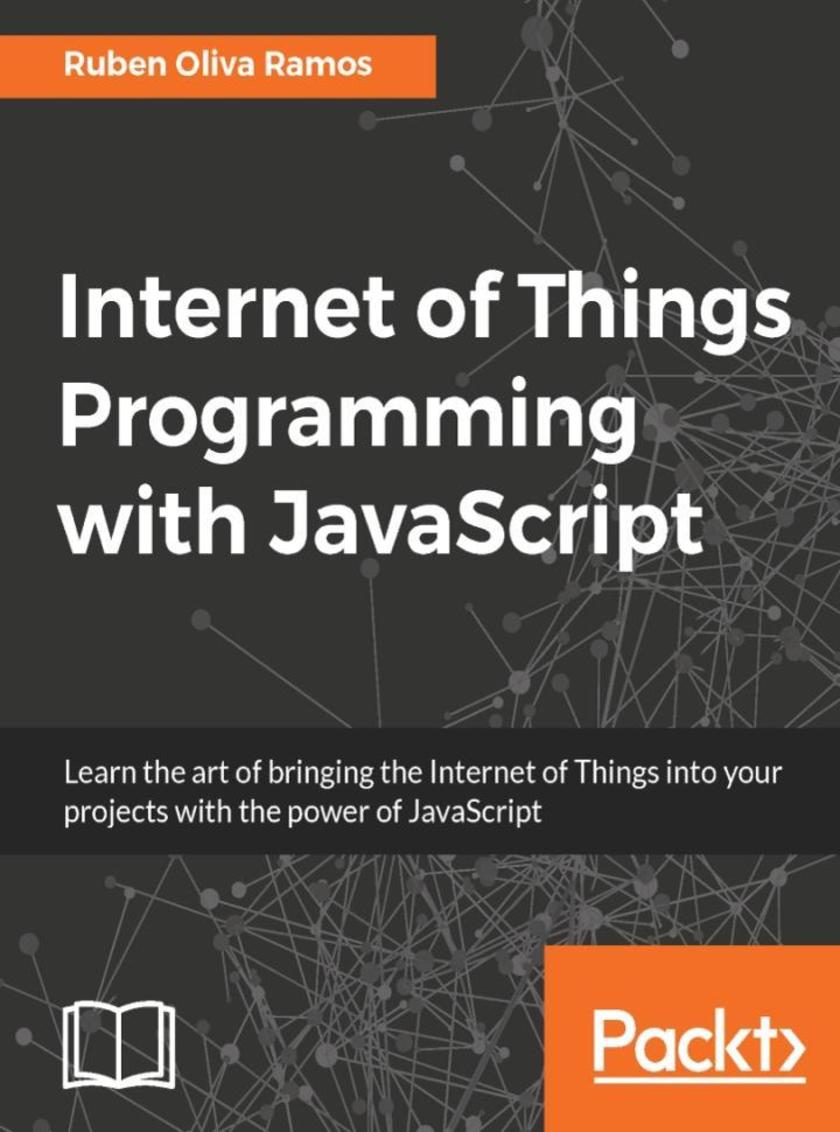
Internet of Things Programming with JavaScript
¥71.93
Learn the art of bringing the Internet of Things into your projects with the power of JavaScript About This Book This is a practical guide to help you configure and build a complete distributed IoT system from scratch using JavaScript Utilize the power of Node and HTML5 to develop web services and a centralized web server, enabling high-level communication between connected devices Control all your connected devices from the browser by setting up a common dashboard Who This Book Is For This book is for developers who are interested in learning how to communicate with connected devices in JavaScript to set up an IoT system. Some basic knowledge of JavaScript is expected. Hobbyists who want to explore the potential of IoT in JavaScript will also find this book useful. What You Will Learn Develop the skills to connected devices prepared the field to interact with the devices in a network system Internet of Things Find out how to connect sensors and actuators to the devices Send data to a web server connected devices Understand Internet of things using web services and database Configure a dashboard using HTML5 and JavaScript Control devices connected from a dashboard Monitor different devices from the dashboard Build an app for a smartphone to control different devices In Detail The Internet of Things (IoT) is an entirely new platform for developers and engineers, but one thing that remains consistent as we move into this new world, are the programming languages. JavaScript is the most widely used language over the Internet, and with IoT gaining momentum, you will learn how to harness the power of JavaScript to interact with connected devices. This book will teach you how to interact with endpoint devices by developing web services in JavaScript and also set up an interface to control all connected devices. This book begins with setting up a centralized web server that serves as a hub for all connected devices. The book then progresses further towards building web services to facilitate high-level communication between connected devices. Using Arduino and Raspberry Pi Zero as endpoint devices, the book will show you how devices can communicate with each other, perform a wide range of tasks, and also be controlled from a centralized location using JavaScript. The book ends with creating a hybrid app to control the devices that can be run from a browser or installed on a smartphone. Style and approach This book offers step-by-step guidance on how to set up a distributed IoT system using JavaScript. It will teach you how to interact with endpoint devices by developing web services in JavaScript and also set up an interface for controlling all connected devices.
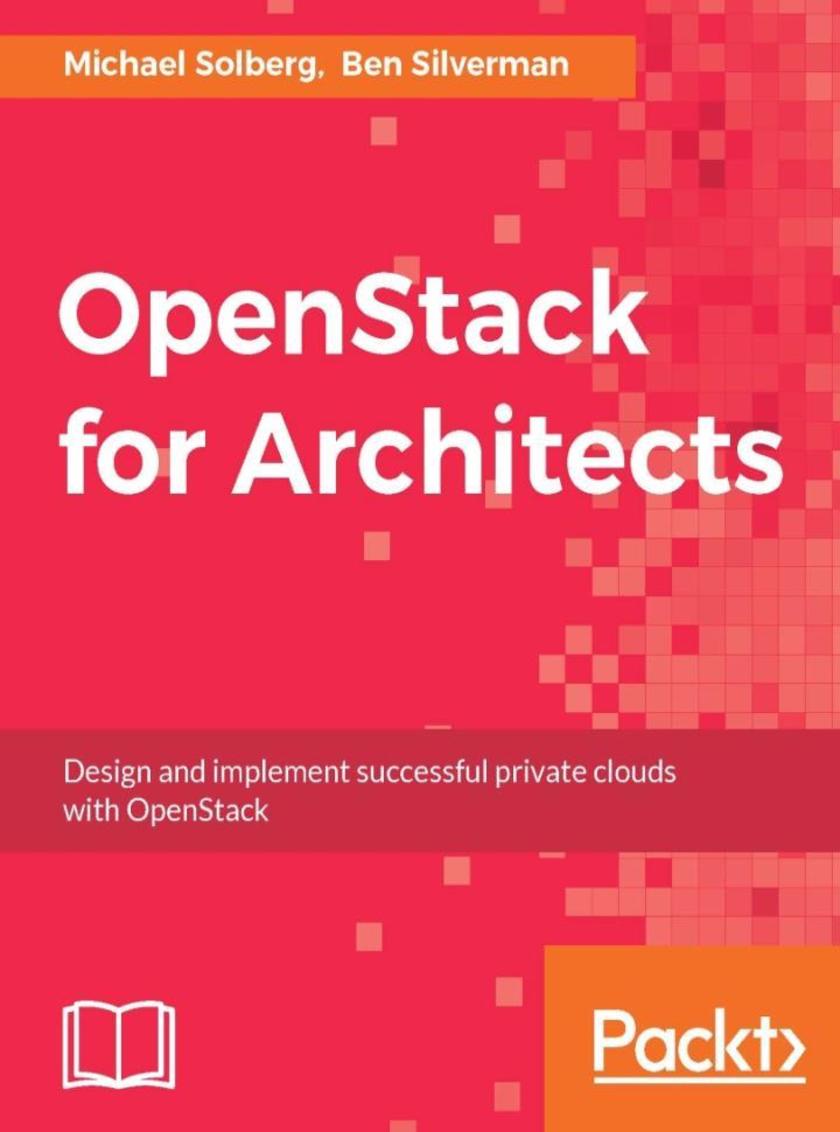
OpenStack for Architects
¥71.93
Design and implement successful private clouds with OpenStack About This Book Explore the various design choices available for cloud architects within an OpenStack deployment Craft an OpenStack architecture and deployment pipeline to meet the unique needs of your organization Create a product roadmap for Infrastructure as a Service in your organization using this hands-on guide Who This Book Is For This book is written especially for those who will design OpenStack clouds and lead their implementation. These people are typically cloud architects, but may also be in product management, systems engineering, or enterprise architecture. What You Will Learn Familiarize yourself with the components of OpenStack Build an increasingly complex OpenStack lab deployment Write compelling documentation for the architecture teams within your organization Apply Agile configuration management techniques to deploy OpenStack Integrate OpenStack with your organization's identity management, provisioning, and billing systems Configure a robust virtual environment for users to interact with Use enterprise security guidelines for your OpenStack deployment Create a product roadmap that delivers functionality quickly to the users of your platform In Detail Over the last five years, hundreds of organizations have successfully implemented Infrastructure as a Service (IaaS) platforms based on OpenStack. The huge amount of investment from these organizations, industry giants such as IBM and HP, as well as open source leaders such as Red Hat have led analysts to label OpenStack as the most important open source technology since the Linux operating system. Because of its ambitious scope, OpenStack is a complex and fast-evolving open source project that requires a diverse skill-set to design and implement it. This guide leads you through each of the major decision points that you'll face while architecting an OpenStack private cloud for your organization. At each point, we offer you advice based on the experience we've gained from designing and leading successful OpenStack projects in a wide range of industries. Each chapter also includes lab material that gives you a chance to install and configure the technologies used to build production-quality OpenStack clouds. Most importantly, we focus on ensuring that your OpenStack project meets the needs of your organization, which will guarantee a successful rollout. Style and approach This is practical, hands-on guide to implementing OpenStack clouds, where each topic is illustrated with real-world examples and then the technical points are proven in the lab.
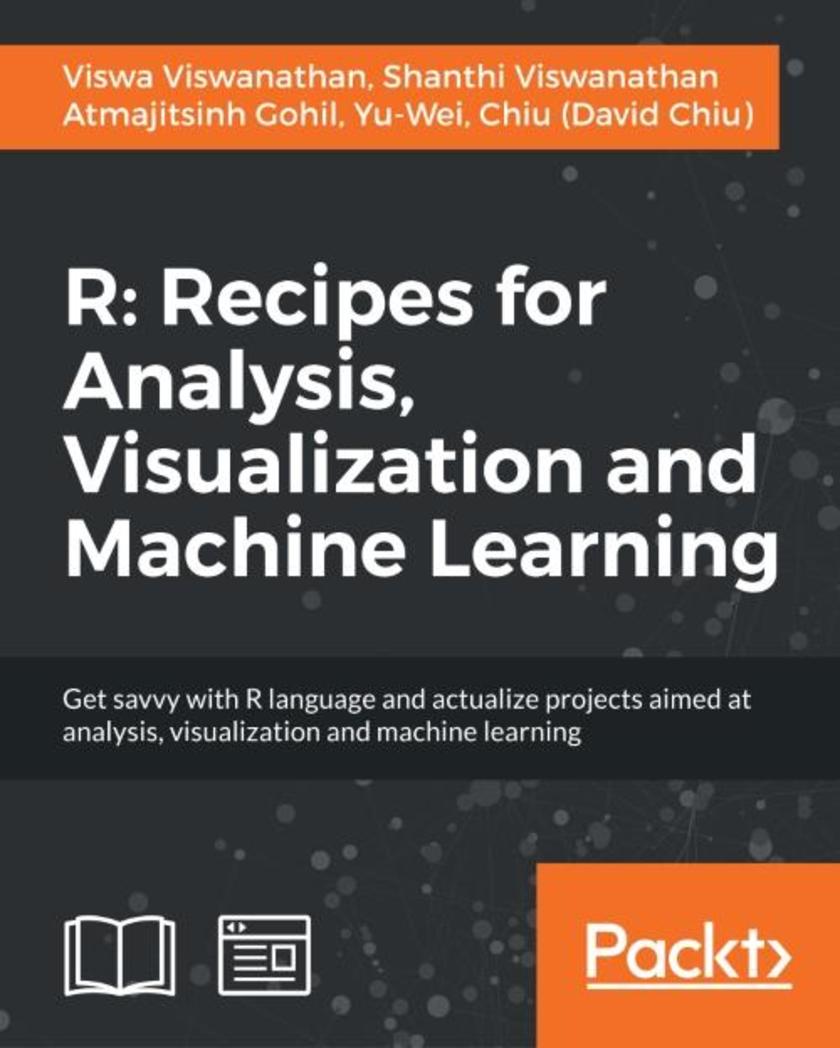
R: Recipes for Analysis, Visualization and Machine Learning
¥161.31
Get savvy with R language and actualize projects aimed at analysis, visualization and machine learning About This Book Proficiently analyze data and apply machine learning techniques Generate visualizations, develop interactive visualizations and applications to understand various data exploratory functions in R Construct a predictive model by using a variety of machine learning packages Who This Book Is For This Learning Path is ideal for those who have been exposed to R, but have not used it extensively yet. It covers the basics of using R and is written for new and intermediate R users interested in learning. This Learning Path also provides in-depth insights into professional techniques for analysis, visualization, and machine learning with R – it will help you increase your R expertise, regardless of your level of experience. What You Will Learn Get data into your R environment and prepare it for analysis Perform exploratory data analyses and generate meaningful visualizations of the data Generate various plots in R using the basic R plotting techniques Create presentations and learn the basics of creating apps in R for your audience Create and inspect the transaction dataset, performing association analysis with the Apriori algorithm Visualize associations in various graph formats and find frequent itemset using the ECLAT algorithm Build, tune, and evaluate predictive models with different machine learning packages Incorporate R and Hadoop to solve machine learning problems on big data In Detail The R language is a powerful, open source, functional programming language. At its core, R is a statistical programming language that provides impressive tools to analyze data and create high-level graphics. This Learning Path is chock-full of recipes. Literally! It aims to excite you with awesome projects focused on analysis, visualization, and machine learning. We’ll start off with data analysis – this will show you ways to use R to generate professional analysis reports. We’ll then move on to visualizing our data – this provides you with all the guidance needed to get comfortable with data visualization with R. Finally, we’ll move into the world of machine learning – this introduces you to data classification, regression, clustering, association rule mining, and dimension reduction. This Learning Path combines some of the best that Packt has to offer in one complete, curated package. It includes content from the following Packt products: R Data Analysis Cookbook by Viswa Viswanathan and Shanthi Viswanathan R Data Visualization Cookbook by Atmajitsinh Gohil Machine Learning with R Cookbook by Yu-Wei, Chiu (David Chiu) Style and approach This course creates a smooth learning path that will teach you how to analyze data and create stunning visualizations. The step-by-step instructions provided for each recipe in this comprehensive Learning Path will show you how to create machine learning projects with R.
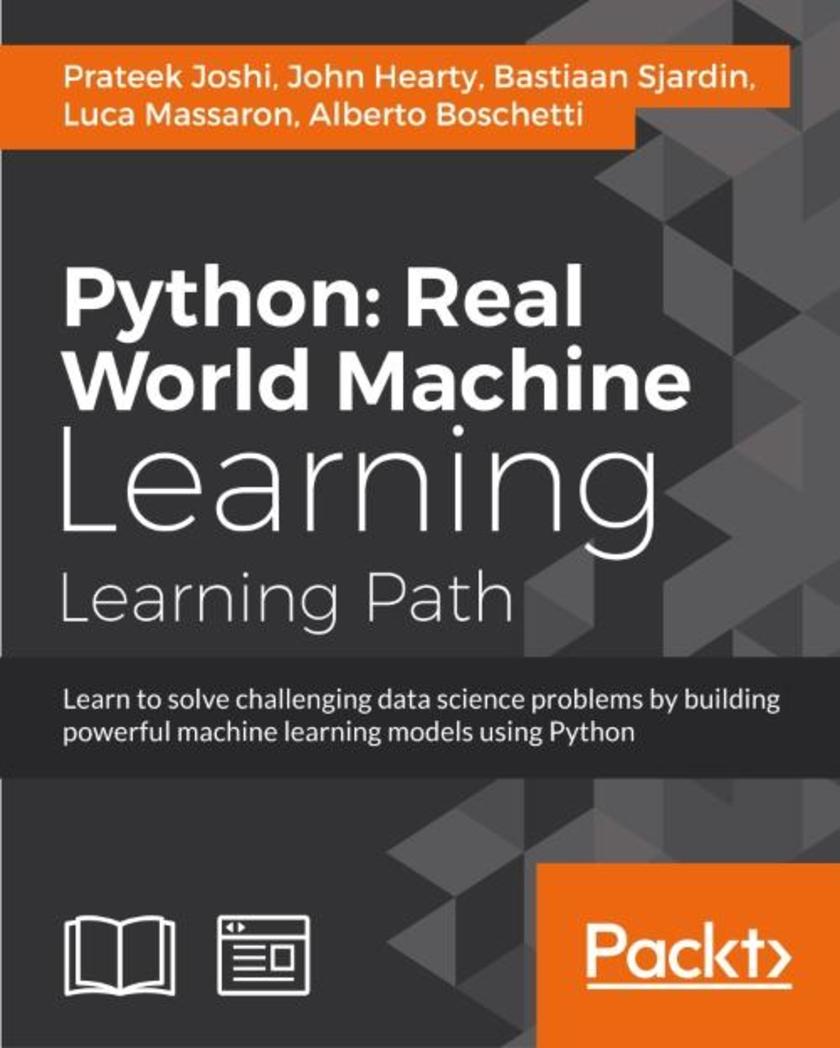
Python: Real World Machine Learning
¥161.31
Learn to solve challenging data science problems by building powerful machine learning models using Python About This Book Understand which algorithms to use in a given context with the help of this exciting recipe-based guide This practical tutorial tackles real-world computing problems through a rigorous and effective approach Build state-of-the-art models and develop personalized recommendations to perform machine learning at scale Who This Book Is For This Learning Path is for Python programmers who are looking to use machine learning algorithms to create real-world applications. It is ideal for Python professionals who want to work with large and complex datasets and Python developers and analysts or data scientists who are looking to add to their existing skills by accessing some of the most powerful recent trends in data science. Experience with Python, Jupyter Notebooks, and command-line execution together with a good level of mathematical knowledge to understand the concepts is expected. Machine learning basic knowledge is also expected. What You Will Learn Use predictive modeling and apply it to real-world problems Understand how to perform market segmentation using unsupervised learning Apply your new-found skills to solve real problems, through clearly-explained code for every technique and test Compete with top data scientists by gaining a practical and theoretical understanding of cutting-edge deep learning algorithms Increase predictive accuracy with deep learning and scalable data-handling techniques Work with modern state-of-the-art large-scale machine learning techniques Learn to use Python code to implement a range of machine learning algorithms and techniques In Detail Machine learning is increasingly spreading in the modern data-driven world. It is used extensively across many fields such as search engines, robotics, self-driving cars, and more. Machine learning is transforming the way we understand and interact with the world around us. In the first module, Python Machine Learning Cookbook, you will learn how to perform various machine learning tasks using a wide variety of machine learning algorithms to solve real-world problems and use Python to implement these algorithms. The second module, Advanced Machine Learning with Python, is designed to take you on a guided tour of the most relevant and powerful machine learning techniques and you’ll acquire a broad set of powerful skills in the area of feature selection and feature engineering. The third module in this learning path, Large Scale Machine Learning with Python, dives into scalable machine learning and the three forms of scalability. It covers the most effective machine learning techniques on a map reduce framework in Hadoop and Spark in Python. This Learning Path will teach you Python machine learning for the real world. The machine learning techniques covered in this Learning Path are at the forefront of commercial practice. This Learning Path combines some of the best that Packt has to offer in one complete, curated package. It includes content from the following Packt products: Python Machine Learning Cookbook by Prateek Joshi Advanced Machine Learning with Python by John Hearty Large Scale Machine Learning with Python by Bastiaan Sjardin, Alberto Boschetti, Luca Massaron Style and approach This course is a smooth learning path that will teach you how to get started with Python machine learning for the real world, and develop solutions to real-world problems. Through this comprehensive course, you’ll learn to create the most effective machine learning techniques from scratch and more!
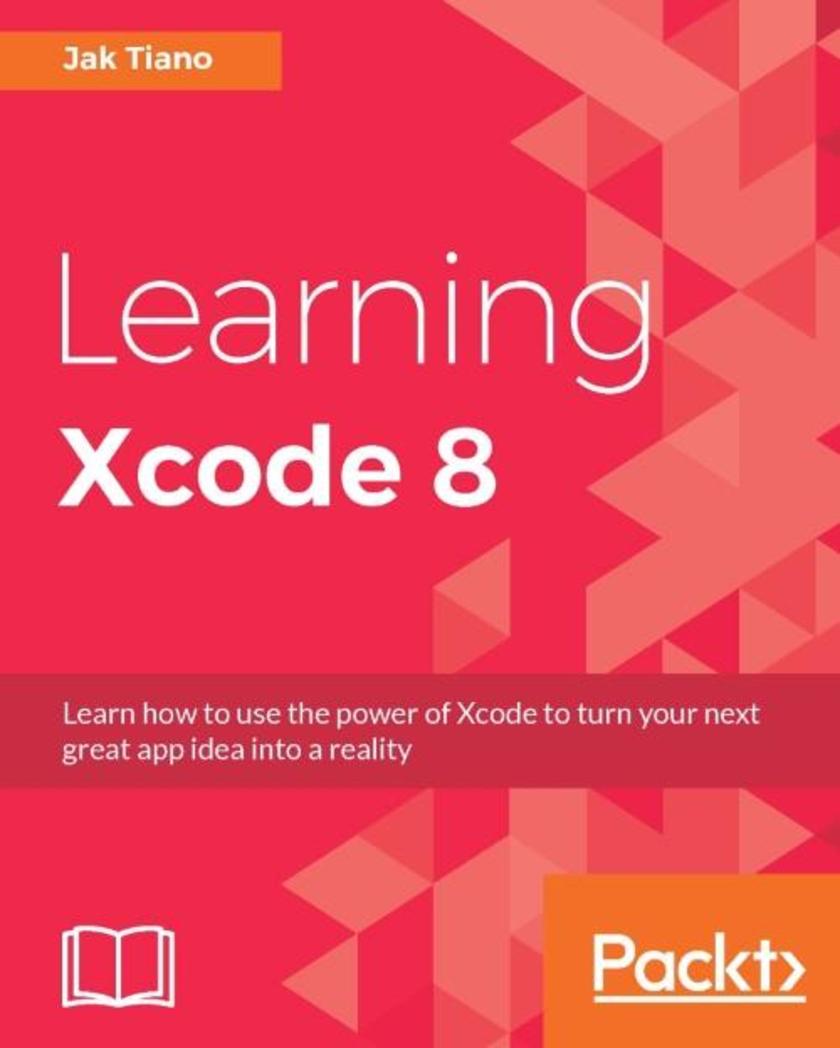
Learning Xcode 8
¥90.46
Learn how to use the power of Xcode to turn your next great app idea into a reality About This Book Learn the theory and tools behind app development using Swift 3 and Xcode 8 Build a fully featured iOS app, including a companion app for the Apple Watch Optimize, debug, and ultimately release your app on Test Flight and the App Store Who This Book Is For This book is intended for programmers looking to get a jump-start into the world of iOS development. Whether you’re a young student who has only spent a few months with Java, or a seasoned developer who has spent their career developing for a different platform, all that is expected is a basic understanding of a programming language such as C++, C#, or Java. What You Will Learn Understand the most important features of the Xcode IDE Write Swift 3 code for application data models and view controllers Prepare visual layouts for an iOS application using storyboards, size classes, and auto-layout Integrate many common technologies into an app, such as multi-touch gestures, CoreData, and notifications Build companion applications for the Apple Watch with watchOS 3 Debug applications using Xcode’s suite of debugging tools, and prevent bugs with unit testing Optimize an application using Xcode 8’s profiling tools and asset catalogs Distribute a beta application through TestFlight, and a finished application through the App Store In Detail Over the last few years, we’ve seen a breakthrough in mobile computing and the birth of world-changing mobile apps. With a reputation as one of the most user-centric and developer-friendly platforms, iOS is the best place to launch your next great app idea. As the official tool to create iOS applications, Xcode is chock full of features aimed at making a developer’s job easier, faster, and more fun. This book will take you from complete novice to a published app developer, and covers every step in between. You’ll learn the basics of iOS application development by taking a guided tour through the Xcode software and Swift programming language, before putting that knowledge to use by building your first app called “Snippets.” Over the course of the book, you will continue to explore the many facets of iOS development in Xcode by adding new features to your app, integrating gestures and sensors, and even creating an Apple Watch companion app. You’ll also learn how to use the debugging tools, write unit tests, and optimize and distribute your app. By the time you make it to the end of this book, you will have successfully built and published your first iOS application. Style and approach This easy-to-follow guide presents topics in a hands-on lecture format where concepts are introduced and explained, then used in an example as reinforcement. The first third of the book covers the separate building blocks of development, while the second two thirds cover the development of an app from start to finish.
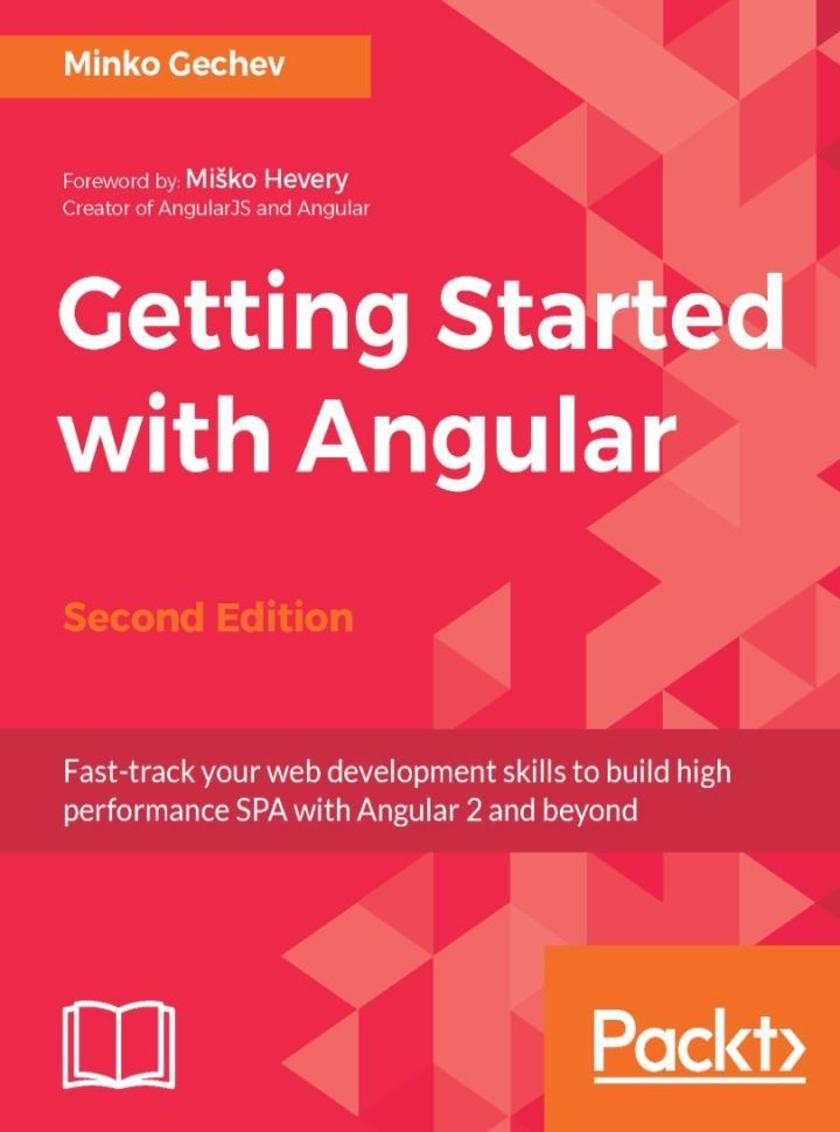
Getting Started with Angular - Second Edition
¥63.21
Fast-track your web development skills to build high performance SPA with Angular 2 and beyond About This Book Up to date with the latest API changes introduced by Angular 2 and 4 Get familiar with the improvements to directives, change detection, dependency injection, router, and more Understand Angular's new component-based architecture Start using TypeScript to supercharge your Angular applications Who This Book Is For Do you want to jump in at the deep end of AngularOr perhaps you’re interested assessing the changes to AngularJS before moving overIf so, then "Getting Started with Angular" is the book for you. To get the most out of the book, you’ll need to be familiar with AngularJS 1.x, and have a good understanding of JavaScript. What You Will Learn Understand the changes made from AngularJS with side-by-side code samples to help demystify the Angular learning curve Start working with Angular’s new method of implementing directives Use TypeScript to write modern, powerful Angular applications Dig in to the change detection method, and other architectural changes to make sure you know what’s going on under the hood of Angular Get to work with the new router in Angular Use the new features of Angular, including pipes, and the updated features such as forms, services, and dependency injection Learn about the server-side rendering in Angular to keep your new applications SEO-friendly Enhance your applications using Ahead-of-Time compilation and Web Workers In Detail I'm delighted to see this new update and hope it helps you build amazing things with Angular. - Mi?ko Hevery, Creator of AngularJS and Angular Angular is the modern framework you need to build performant and robust web applications. This book is the quickest way to upgrade your AngularJS knowledge to the brave new world of Angular, and get grips with the framework. It starts with an overview putting the changes of the framework in context with version 1. After that, you will be taken on a TypeScript crash-course so you can take advantage of Angular in its native, statically-typed environment. You'll explore the new change detection mechanism in detail, how directives and components have changed, how you create applications with Angular, and much more. Next, you'll understand how to efficienly develop forms, use the router, implement communication with HTTP services, and transform data with custom pipes. Finally, we will take a look at the Angular's Ahead-of-Time compiler, angular-cli and other such tools that help us build professional applications. By the end of the book, you’ll be ready to start building quick and efficient Angular applications compatible with v2 and v4, that take advantage of all the new features on offer. This book is up to date for the 2.4 release and is compatible with the 4.0 release as well. Style and approach Starting with a comparison between Angular versions, this book is filled with side-by-side code examples to help highlight the changes. Each chapter then looks at major changes to the framework and is filled with small examples and sample code to get you started.
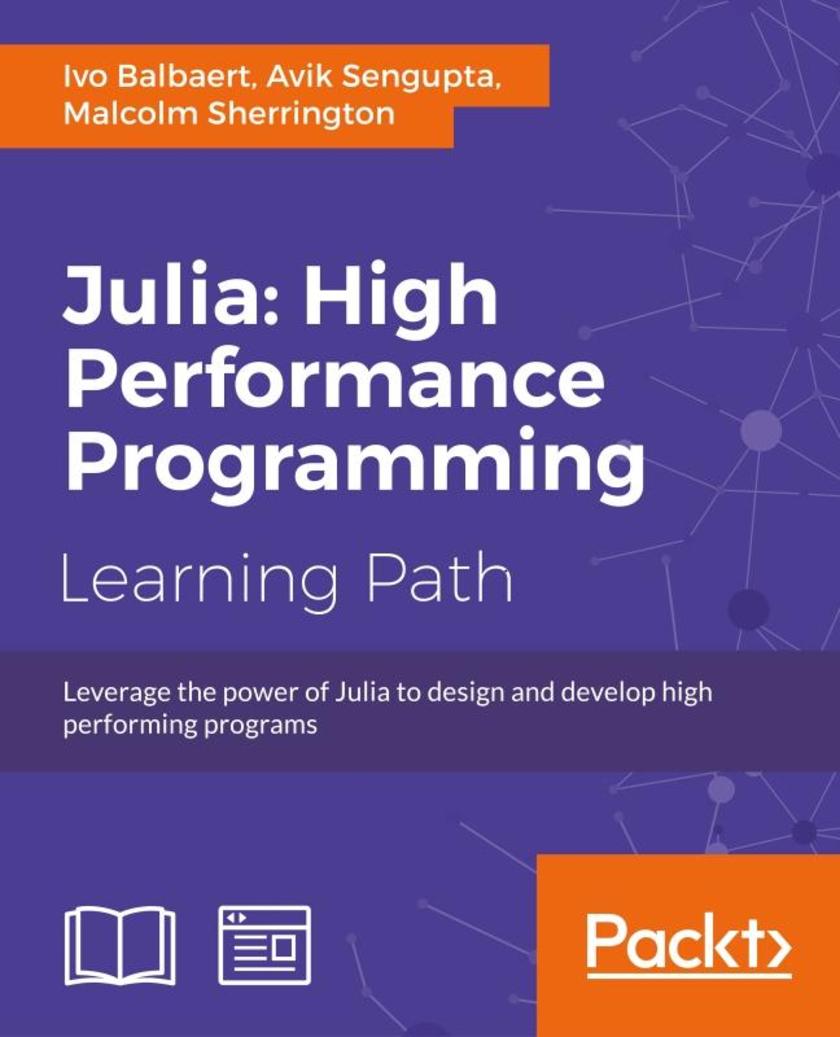
Julia: High Performance Programming
¥179.84
Leverage the power of Julia to design and develop high performing programs About This Book Get to know the best techniques to create blazingly fast programs with Julia Stand out from the crowd by developing code that runs faster than your peers' code Complete an extensive data science project through the entire cycle from ETL to analytics and data visualization Who This Book Is For This learning path is for data scientists and for all those who work in technical and scientific computation projects. It will be great for Julia developers who are interested in high-performance technical computing. This learning path assumes that you already have some basic working knowledge of Julia's syntax and high-level dynamic languages such as MATLAB, R, Python, or Ruby. What You Will Learn Set up your Julia environment to achieve the highest productivity Solve your tasks in a high-level dynamic language and use types for your data only when needed Apply Julia to tackle problems concurrently and in a distributed environment Get a sense of the possibilities and limitations of Julia's performance Use Julia arrays to write high performance code Build a data science project through the entire cycle of ETL, analytics, and data visualization Display graphics and visualizations to carry out modeling and simulation in Julia Develop your own packages and contribute to the Julia Community In Detail In this learning path, you will learn to use an interesting and dynamic programming language—Julia! You will get a chance to tackle your numerical and data problems with Julia. You’ll begin the journey by setting up a running Julia platform before exploring its various built-in types. We’ll then move on to the various functions and constructs in Julia. We’ll walk through the two important collection types—arrays and matrices in Julia. You will dive into how Julia uses type information to achieve its performance goals, and how to use multiple dispatch to help the compiler emit high performance machine code. You will see how Julia’s design makes code fast, and you’ll see its distributed computing capabilities. By the end of this learning path, you will see how data works using simple statistics and analytics, and you’ll discover its high and dynamic performance—its real strength, which makes it particularly useful in highly intensive computing tasks. This learning path combines some of the best that Packt has to offer in one complete, curated package. It includes content from the following Packt products: Getting Started with Julia by Ivo Balvaert Julia High Performance by Avik Sengupta Mastering Julia by Malcolm Sherrington Style and approach This hands-on manual will give you great explanations of the important concepts related to Julia programming.
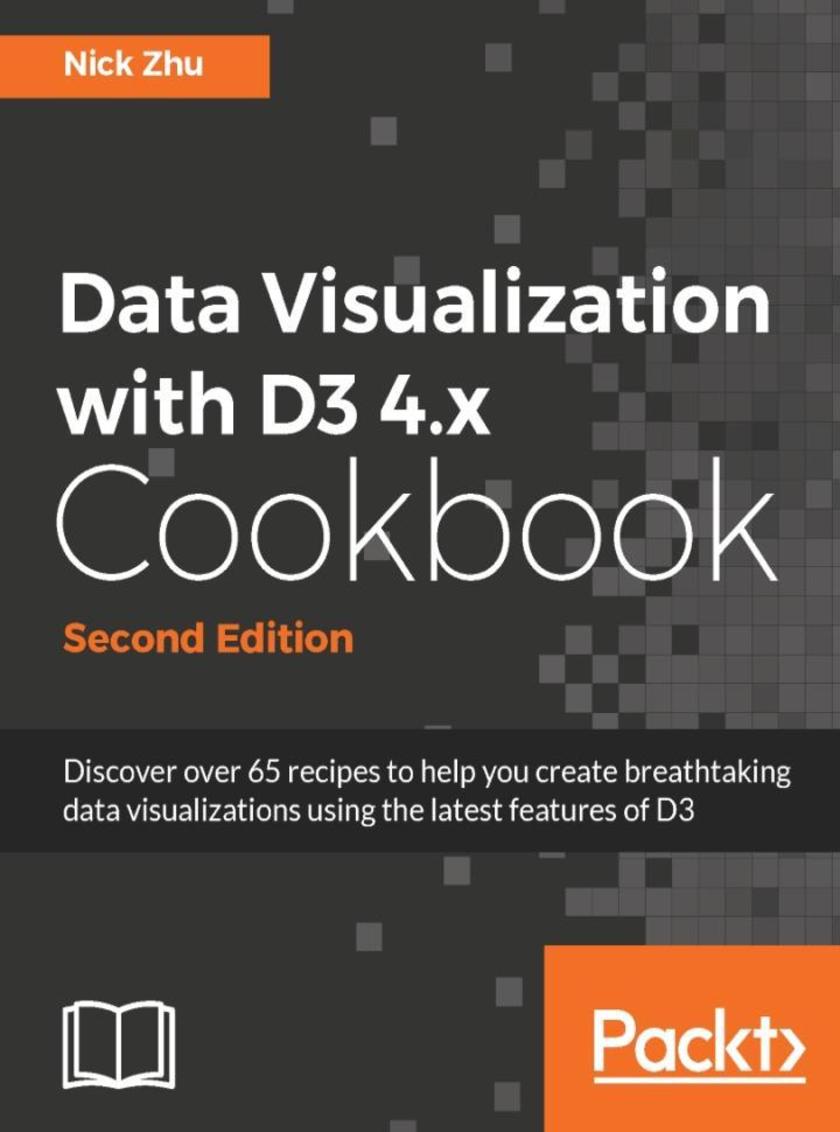
Data Visualization with D3 4.x Cookbook - Second Edition
¥80.65
Discover over 65 recipes to help you create breathtaking data visualizations using the latest features of D3 About This Book Learn about D3 4.0 from the inside out and master its new features Utilize D3 packages to generate graphs, manipulate data, and create beautiful presentations Solve real-world visualization problems with the help of practical recipes Who This Book Is For If you are a developer familiar with HTML, CSS, and JavaScript, and you wish to get the most out of D3, then this book is for you. This book can serve as a desktop quick-reference guide for experienced data visualization developers. You’ll also find this book useful if you’re a D3 user who wants to take advantage of the new features introduced in D3 4.0. You should have previous experience with D3. What You Will Learn Get a solid understanding of the D3 fundamentals and idioms Use D3 to load, manipulate, and map data to any kind of visual representation on the web Create data-driven dynamic visualizations that update as the data does Leverage the various modules provided by D3 to create sophisticated, dynamic, and interactive charts and graphics Create data-driven transitions and animations within your visualizations Understand and leverage more advanced concepts such as force, touch, and Geo data visualizations In Detail This book gives you all the guidance you need to start creating modern data visualizations with D3 4.x that take advantage of the latest capabilities of JavaScript. The book starts with the basic D3 structure and building blocks and quickly moves on to writing idiomatic D3-style JavaScript code. You will learn how to work with selection to target certain visual elements on the page, then you will see techniques to represent data both in programming constructs and its visual metaphor. You will learn how map values in your data domain to the visual domain using scales, and use the various shape functions supported by D3 to create SVG shapes in visualizations. Moving on, you’ll see how to use and customize various D3 axes and master transition to add bells and whistles to otherwise dry visualizations. You’ll also learn to work with charts, hierarchy, graphs, and build interactive visualizations. Next you’ll work with Force, which is one of the most awe-inspiring techniques you can add to your visualizations, and you’ll implement a fully functional Choropleth map (a special purpose colored map) in D3. Finally, you’ll learn to unit test data visualization code and test-driven development in a visualization project so you know how to produce high-quality D3 code. Style and approach This step-by-step guide to mastering data visualizations with D3 will help you create amazing data visualizations with professional efficiency and precision. It is a solution-based guide in which you learn through practical recipes, illustrations, and code samples.
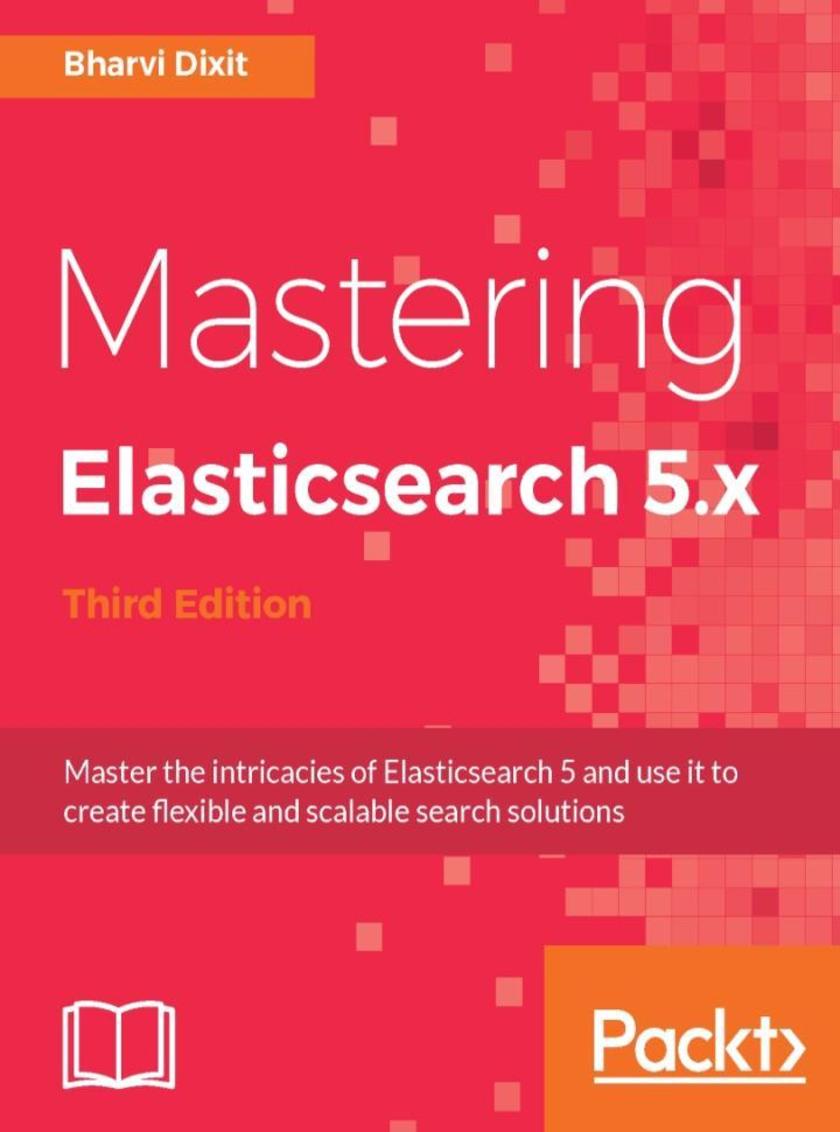
Mastering Elasticsearch 5.x - Third Edition
¥90.46
Master the intricacies of Elasticsearch 5 and use it to create flexible and scalable search solutions About This Book Master the searching, indexing, and aggregation features in ElasticSearch Improve users’ search experience with Elasticsearch’s functionalities and develop your own Elasticsearch plugins A comprehensive, step-by-step guide to master the intricacies of ElasticSearch with ease Who This Book Is For If you have some prior working experience with Elasticsearch and want to take your knowledge to the next level, this book will be the perfect resource for you.If you are a developer who wants to implement scalable search solutions with Elasticsearch, this book will also help you. Some basic knowledge of the query DSL and data indexing is required to make the best use of this book. What You Will Learn Understand Apache Lucene and Elasticsearch 5’s design and architecture Use and configure the new and improved default text scoring mechanism in Apache Lucene 6 Know how to overcome the pitfalls while handling relational data in Elasticsearch Learn about choosing the right queries according to the use cases and master the *ing module including new default *ing language, painlessly Explore the right way of scaling production clusters to improve the performance of Elasticsearch Master the searching, indexing, and aggregation features in Elasticsearch Develop your own Elasticsearch plugins to extend the functionalities of Elasticsearch In Detail Elasticsearch is a modern, fast, distributed, scalable, fault tolerant, and open source search and analytics engine. Elasticsearch leverages the capabilities of Apache Lucene, and provides a new level of control over how you can index and search even huge sets of data. This book will give you a brief recap of the basics and also introduce you to the new features of Elasticsearch 5. We will guide you through the intermediate and advanced functionalities of Elasticsearch, such as querying, indexing, searching, and modifying data. We’ll also explore advanced concepts, including aggregation, index control, sharding, replication, and clustering. We’ll show you the modules of monitoring and administration available in Elasticsearch, and will also cover backup and recovery. You will get an understanding of how you can scale your Elasticsearch cluster to contextualize it and improve its performance. We’ll also show you how you can create your own analysis plugin in Elasticsearch. By the end of the book, you will have all the knowledge necessary to master Elasticsearch and put it to efficient use. Style and approach This comprehensive guide covers intermediate and advanced concepts in Elasticsearch as well as their implementation. An easy-to-follow approach means you’ll be able to master even advanced querying, searching, and administration tasks with ease.
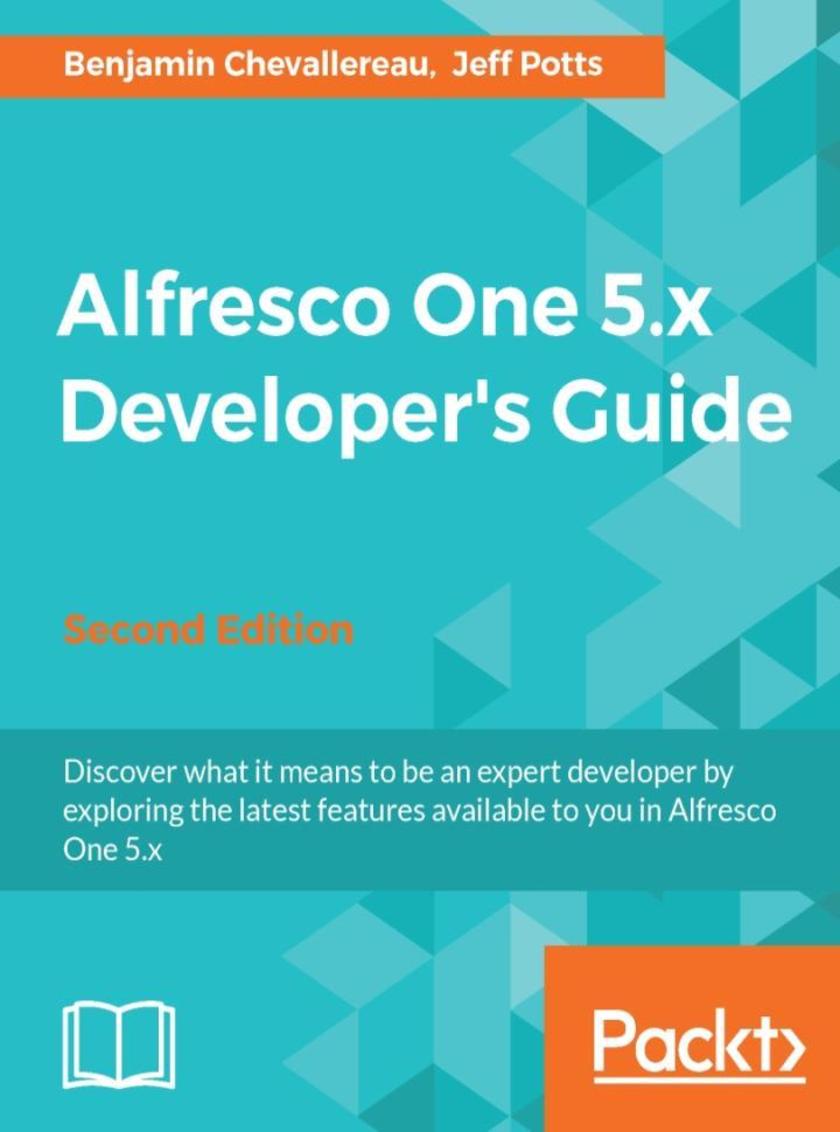
Alfresco One 5.x Developer’s Guide - Second Edition
¥80.65
Discover what it means to be an expert developer by exploring the latest features available to you in Alfresco One 5.x About This Book Create reliable and secure enterprise apps with the latest Alfresco One 5.x platform Explore all the latest Alfresco One 5.x APIs such as the CMIS API, Alfresco One API, and the integrated RESTful API to get more out of your enterprise apps Unleash the power of the latest JavaScript engine and the JavaScript API for Alfresco to customize your existing apps for the Alfresco 5 platform Who This Book Is For If you’re an enterprise app developer who wants to create custom applications with Alfresco, then this book is for you. Previous knowledge with Alfresco would be helpful but is not necessary. What You Will Learn Create and manage a custom content model Configure the Alfresco Share user interface Build a new AngularJS 2.0 application Create business process definitions using Activiti Designer Discover the most common extensions provided by Alfresco Configure Alfresco to authenticate against LDAP, including & chaining" LDAP with Alfresco authentication Get familiar with the latest features of Alfresco Mobile SDK, Smart Search, and the new Angular framework In Detail Do you want to create more reliable and secure solutions for enterprise appsAlfresco One 5.x is your gateway to developing the best industry-standard enterprise apps and this book will help you to become a pro with Alfresco One 5.x development. This book will help you create a complete fully featured app for your organization and while you create that perfect app, you will explore and implement the new and intriguing features of Alfresco. The book starts with an introduction to the Alfresco platform and you’ll see how to configure and customize it. You will learn how to work with the content in a content management system and how you can extend it to your own use case. Next, you will find out how to work with Alfresco Share, an all-purpose user interface for general document management, and customize it. Moving on, you write web *s that create, read, and delete data in the back-end repository. Further on from that, you’ll work with a set of tools that Alfresco provides; to generate a basic AnglularJS application supporting use cases, to name a few authentication, document list, document view. Finally, you’ll learn how to develop your own Alfresco Mobile app and understand how Smart Folders and Search manager work. By the end of the book, you’ll know how to configure Alfresco to authenticate against LDAP, be able to set up Single Sign-On (SSO), and work with Alfresco’s security services. Style and approach This book takes a step-by-step practical tutorial-style approach helping you create a complete enterprise app using Alfresco.
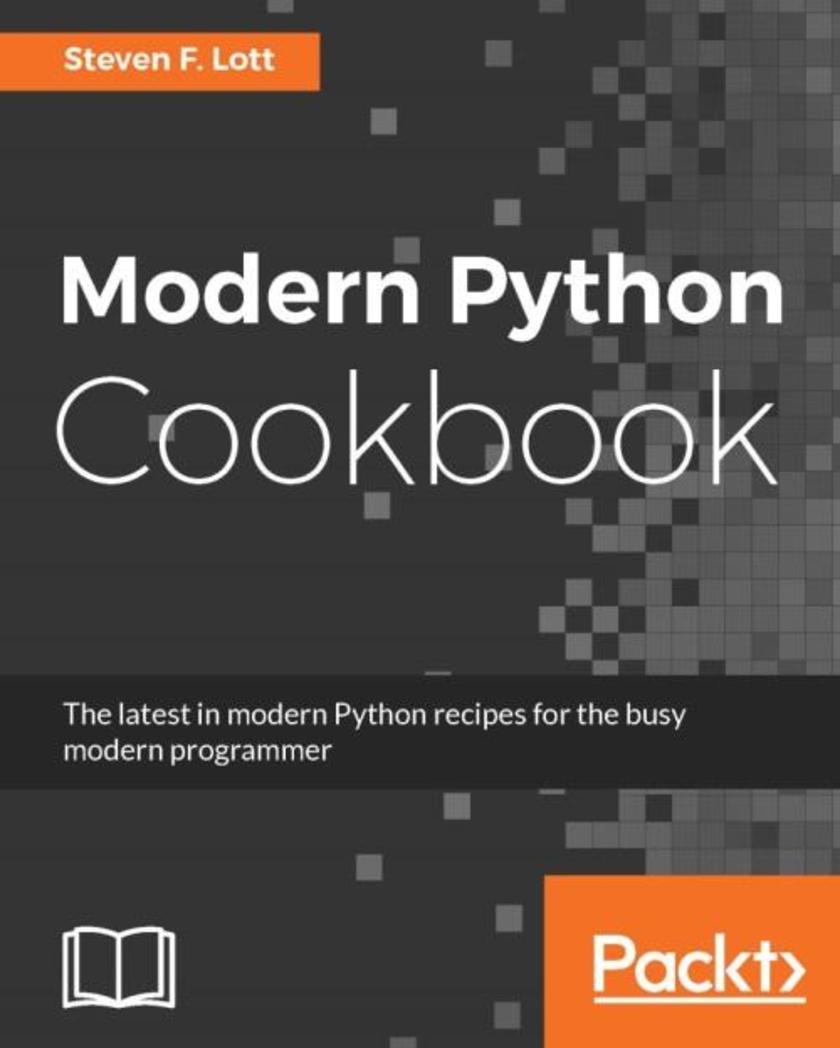
Modern Python Cookbook
¥90.46
The latest in modern Python recipes for the busy modern programmer About This Book Develop succinct, expressive programs in Python Learn the best practices and common idioms through carefully explained and structured recipes Discover new ways to apply Python for the new age of development Who This Book Is For The book is for web developers, programmers, enterprise programmers, engineers, big data scientist, and so on. If you are a beginner, Python Cookbook will get you started. If you are experienced, it will expand your knowledge base. A basic knowledge of programming would help. What You Will Learn See the intricate details of the Python syntax and how to use it to your advantage Improve your code readability through functions in Python Manipulate data effectively using built-in data structures Get acquainted with advanced programming techniques in Python Equip yourself with functional and statistical programming features Write proper tests to be sure a program works as advertised Integrate application software using Python In Detail Python is the preferred choice of developers, engineers, data scientists, and hobbyists everywhere. It is a great *ing language that can power your applications and provide great speed, safety, and scalability. By exposing Python as a series of simple recipes, you can gain insight into specific language features in a particular context. Having a tangible context helps make the language or standard library feature easier to understand. This book comes with over 100 recipes on the latest version of Python. The recipes will benefit everyone ranging from beginner to an expert. The book is broken down into 13 chapters that build from simple language concepts to more complex applications of the language. The recipes will touch upon all the necessary Python concepts related to data structures, OOP, functional programming, as well as statistical programming. You will get acquainted with the nuances of Python syntax and how to effectively use the advantages that it offers. You will end the book equipped with the knowledge of testing, web services, and configuration and application integration tips and tricks. The recipes take a problem-solution approach to resolve issues commonly faced by Python programmers across the globe. You will be armed with the knowledge of creating applications with flexible logging, powerful configuration, and command-line options, automated unit tests, and good documentation. Style and approach This book takes a recipe-based approach, where each recipe addresses specific problems and issues. The recipes provide discussions and insights and an explanation of the problems.
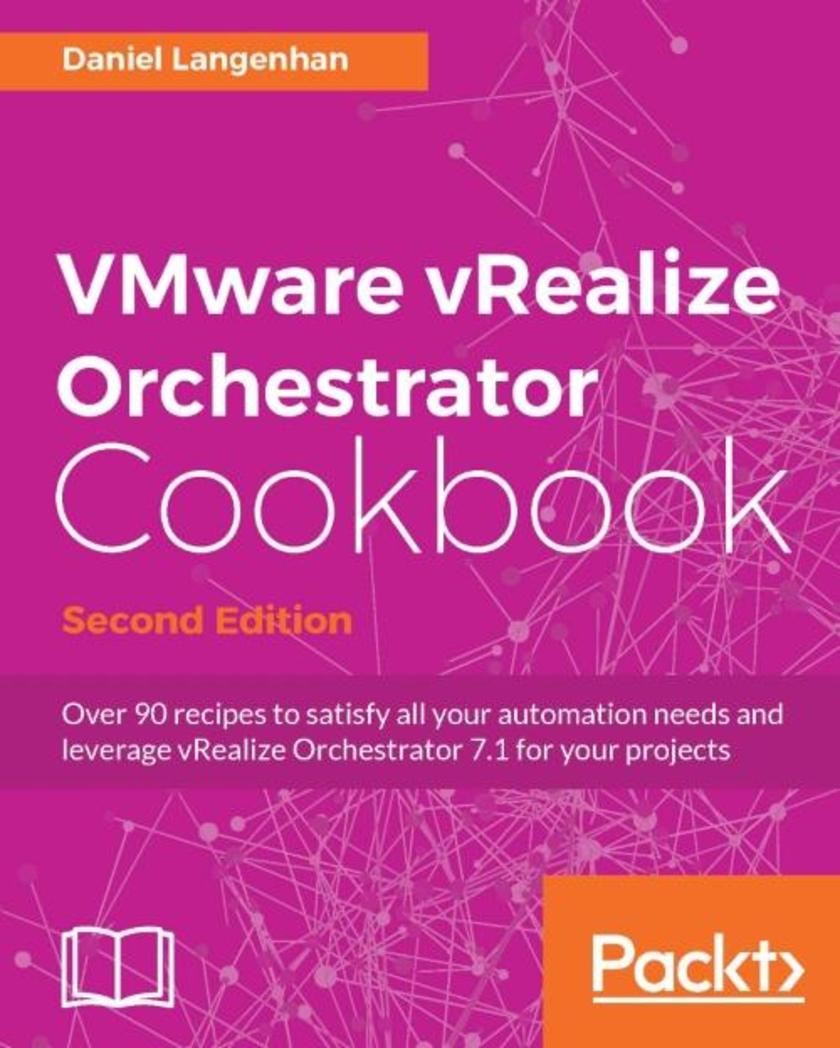
VMware vRealize Orchestrator Cookbook - Second Edition
¥107.90
Over 90 recipes to satisfy all your automation needs and leverage vRealize Orchestrator 7.1 for your projects About This Book Unleash the power of VMware vRealize Orchestrator 7 and automate your VMware infrastructure Customize and tune your orchestrator by programming and working with plugins Work through enticing recipes that can be implemented in your organization Explore the new and upcoming plugins of Puppet, Docker, Chef, and VMware Replication for VMware vRealize Orchestrator Who This Book Is For This book is for system administrators who are into VMware administration and are looking to automate their infrastructure. Basic knowledge about programming is needed. No previous knowledge of Orchestrator is required. This book will also be good for you if you have just a basic knowledge with vRealize Orchestrator, as you can pick up any recipe and implement it for your enterprise. What You Will Learn Install, configure, and optimize Orchestrator installations (Windows, Appliance, and vRA integrated) Explore all the visual programming elements without needing additional infrastructure Work with plugins such as SSH, mail, SQL, PowerShell, AD, SOAP, SNMP, AMQP, and REST Discover how to create VMware automation Get to know about user management, import/export, and synchronization as well as the packaging application Understand policies, resources, and web views Troubleshoot vRO Appliance In Detail VMware vRealize Orchestrator is a powerful automation tool designed for system administrators and IT operations staff who are planning to streamline their tasks and are waiting to integrate the functions with third-party operations software. This book is an update to VMware vRealize Orchestrator Cookbook and is blend of numerous recipes on vRealize Orchestrator 7. This book starts with installing and configuring vRealize Orchestrator. We will demonstrate how to upgrade from previous versions to vRealize Orchestrator 7. You will be taught all about orchestrator plugins and how to use and develop various plugins that have been enhanced in Orchestrator 7. Throughout this book, you will explore the new features of Orchestrator 7, such as the introduction of the control center, along with its uses. You will also come to understand visual programming, how to integrate base plugins into workflows, and how to automate VMware. You will also get to know how to troubleshoot vRealize Orchestrator. By the end of this book, you will be able to get the most out of your Orchestrator installation, and will be able to develop complex workflows and create your own highly integrated automations of vRealize environments. Style and approach This practical guide provides exciting and practical recipes on VMware vRealize Orchestrator 7 for those who are waiting to automate their infrastructure.
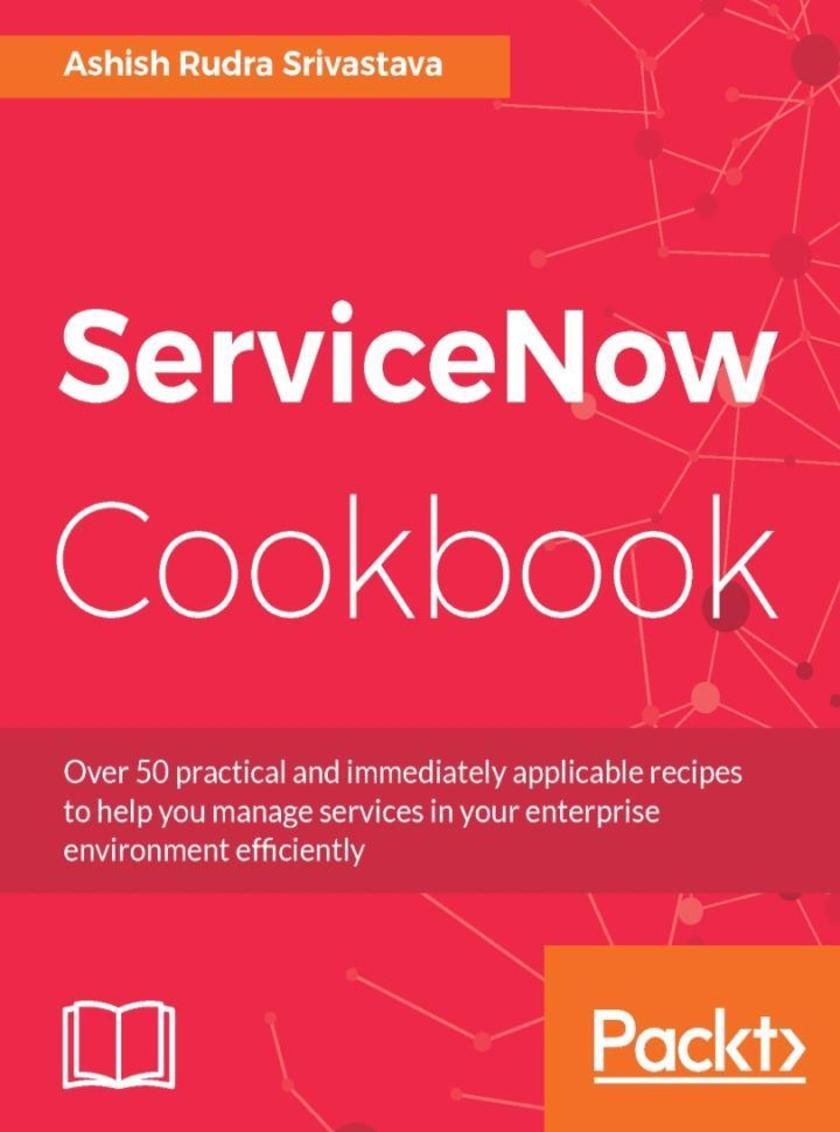
ServiceNow Cookbook
¥80.65
Over 50 practical and immediately applicable recipes to help you manage services in your enterprise environment efficiently About This Book Solve problems and challenges encountered while implementing or using ServiceNow in your organization Helps you build core administration, management, and maintenance skills to automate and orchestrate your IT environment Comes with recipes to improve the way you design and create automated workflows Who This Book Is For This book targets IT professionals and administrators who have some experience of working with ServiceNow already and are looking to solve regular or unique problems that surface when using ServiceNow. It’s advisable to have a basic level of administration experience with ServiceNow. Familiarity with JavaScript is assumed. What You Will Learn Grasp the basics, such as entering and navigation, required to implement ServiceNow Perform core configuration and management tasks Use the ServiceNow plugins to manage development Build and publish custom applications for service management Design data-driven apps to connect with outside worlds by getting into Client and server *ing Configure alerts and notifications and understand e-mail troubleshooting and watermarking Build and configure reports to set up your dashboard as per the requirement Create and configure workflow activities In Detail ServiceNow is the ideal platform for you to create enterprise-level applications, giving borh requesters and fulfillers better visibility and access to a process. With this title we’ll guide you through the world of ServiceNow, letting you take on the best the platform offers you with the least amount of hassle. Starting with the core configuration and management tasks, this book will help you build data-driven apps and it will also explore development best practices. You will learn to set up email notifications for users and work with the database view for reporting. Next, the book will guide you through creating various tasks from the workflow and show you how to make the most of the workflow utilities available in ServiceNow. Finally, the book will drive you through the auditing and diagnosing aspects of ServiceNow. By the end of this book, you will acquire immediately applicable skills to rectify everyday problems encountered on the ServiceNow platform. Style and approach This book follows a recipe-based problem-solution approach to address and dispel challenges faced when implementing and using ServiceNow on a regular basis. It will act as a quick solution when trying to solve specific problems without having to read an exhaustive tutorial.
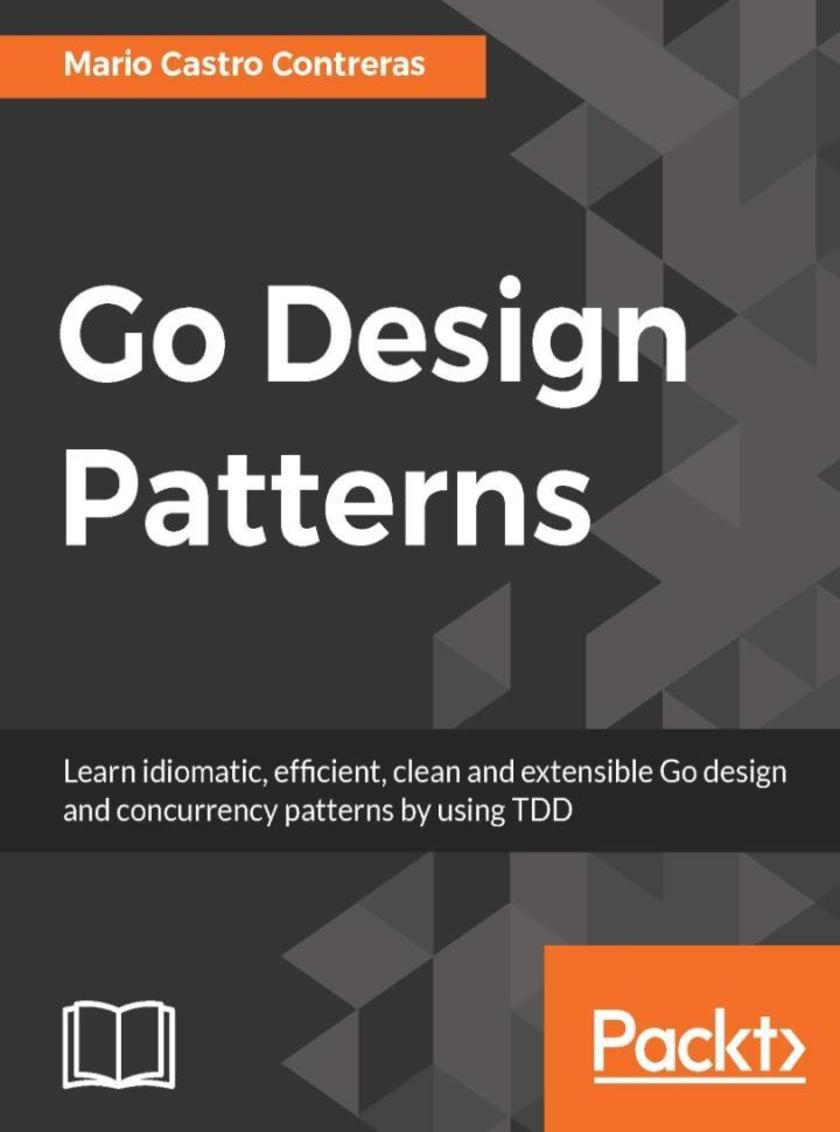
Go Design Patterns
¥90.46
Learn idiomatic, efficient, clean, and extensible Go design and concurrency patterns by using TDD About This Book A highly practical guide filled with numerous examples unleashing the power of design patterns with Go. Discover an introduction of the CSP concurrency model by explaining GoRoutines and channels. Get a full explanation, including comprehensive text and examples, of all known GoF design patterns in Go. Who This Book Is For The target audience is both beginner- and advanced-level developers in the Go programming language. No knowledge of design patterns is expected. What You Will Learn All basic syntax and tools needed to start coding in Go Encapsulate the creation of complex objects in an idiomatic way in Go Create unique instances that cannot be duplicated within a program Understand the importance of object encapsulation to provide clarity and maintainability Prepare cost-effective actions so that different parts of the program aren’t affected by expensive tasks Deal with channels and GoRoutines within the Go context to build concurrent application in Go in an idiomatic way In Detail Go is a multi-paradigm programming language that has built-in facilities to create concurrent applications. Design patterns allow developers to efficiently address common problems faced during developing applications. Go Design Patterns will provide readers with a reference point to software design patterns and CSP concurrency design patterns to help them build applications in a more idiomatic, robust, and convenient way in Go. The book starts with a brief introduction to Go programming essentials and quickly moves on to explain the idea behind the creation of design patterns and how they appeared in the 90’s as a common "language" between developers to solve common tasks in object-oriented programming languages. You will then learn how to apply the 23 Gang of Four (GoF) design patterns in Go and also learn about CSP concurrency patterns, the "killer feature" in Go that has helped Google develop software to maintain thousands of servers. With all of this the book will enable you to understand and apply design patterns in an idiomatic way that will produce concise, readable, and maintainable software. Style and approach This book will teach widely used design patterns and best practices with Go in a step-by-step manner. The code will have detailed examples, to allow programmers to apply design patterns in their day-to-day coding.




 购物车
购物车 个人中心
个人中心



